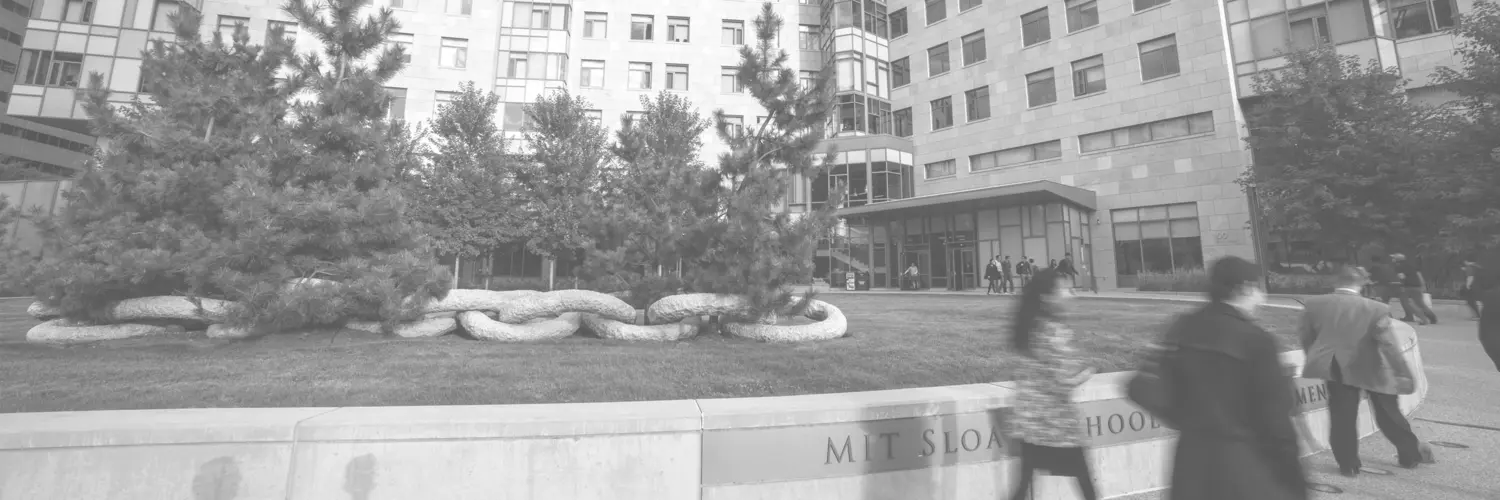The power of the MIT Sloan School of Management is not just in its coursework. In a panel discussion at the 2025 MIT Sloan Reunion titled “Lessons in Finance: How MIT Sloan Shaped Five Careers in the Field,” alumni spoke about the value that the Institute has added to their lives. Beyond shaping their career trajectories, they discussed the manifold, long-lasting impacts of being a Sloanie.
Planting the seeds for success
Warren Naphtal, SM ’85, is co-founder, president, and chief investment officer at P/E Investments. Attending MIT changed the entire course of his life. “I was a civil engineer who wanted to go build bridges with Bechtel—and then I found finance. Franco Modigliani, Bob Merton, and Fischer Black got me interested in finance and derivatives and options,” he remembered.
Early in his second year, he faced a difficult decision: attend a class of Black’s “Problems in Finance” course or go on a date. “I made the right decision—I missed the class,” he joked. That date became his wife and co-founder, Mary Naphtal, SM ’86.
I was a civil engineer who wanted to go build bridges with Bechtel—and then I found finance.
More seriously, he still feels the ripple effect of MIT Sloan. “Professor Deborah Lucas is on our board. Professor Adrien Verdelhan helps us develop algorithms,” he said. “It’s not only when you’re in school here, but also for years after.”
Celi Khanyile-Lynch, MBA ’20, associate in the Planetary Health Division at RA Capital Management, had a similarly transformative experience. With a prior career in government, she didn’t even know how to read a financial statement before coming to MIT Sloan. Coursework to develop her acumen was a critical factor, but so was the career advice.
“I came in saying, ‘I want to do impact investing.’ And then people would say, ‘Well, where and what? What asset classes?’ I remember thinking, ‘Oh, what's an asset class?’” she said with a laugh. “I’ve come a long way since getting my MBA, and I am very grateful for the ways that it shaped my career.”
Applying lessons from Finance 101
Even though panelists said they appreciated the advanced knowledge they obtained in their degrees, they also noted that some of the simplest insights had the most profound impacts on their work.
Frank Graves, SM ’80, is co-founder and principal at Brattle, a company that specializes in the economics and finance of energy assets. When he was at MIT Sloan, it was the heyday of the continuous-time finance work of Merton and others.
“Out of that came the notion of real options as a way of thinking about problems. If you do a classical net present value (NPV) analysis on an expected value basis, you’re probably missing contingents: alternative timings, off-ramps, on-ramps, and so on,” he said.
I’ve come a long way since getting my MBA, and I am very grateful for the ways that it shaped my career.
Graves and some of his classmates applied this to the natural gas industry, which was deregulated in the 1980s, causing incumbent companies to lose money against the market. “A couple of us wrote a paper characterizing how this was an option that was being given away, how much it was worth, and how to start regulating it. That turned out to be a really valuable application of MIT Sloan’s insights,” he remembered. “And it recurred in the electric industry, when we unbundled that industry in the late 1990s.”
James Saliba, MFin ’10, MBA ’15, managing director at Wafra, recalled that when he first started his employment, his parent company—the Public Institution for Social Security of Kuwait—had about 40 percent of their pension in cash. “They looked to our firm because they owned us, and said, ‘Tell us what to do.’ And then [my bosses] pointed at me and said, ‘He has a master of finance—so go build a model.’”
Indeed, Saliba got to work building a standard investment model using the statistical insights from his introductory MIT Sloan coursework. “I’m sure everybody in this room could do exactly what I did,” he added.
For Tracey Nilsen-Ames, MFin ’20, associate portfolio manager at Man Numeric, systematic equity investing makes use of some extremely complicated models. “But you have to prove the need for that complexity. I literally had a conversation the other day about adjusted R-squared versus regular R-squared. We’re still having these very baseline questions coming into what we’re running—because you need to understand every single part of it.”
Sloanies helping Sloanies
Each panelist spoke about the value of the MIT Sloan alumni network, from fellow graduates hiring them as employees to former classmates and mentors recommending them for other roles.
As Saliba explained, “I know part of this panel is thinking about how to break into finance, and there’s really no better way than a Sloanie. With each one of us who came in, the firm said, ‘They haven’t been doing private equity. How do we know they’re good?’ And each [referring alum] said, ‘Trust me, they’re good.’”
A couple of us wrote a paper characterizing how this was an option that was being given away, how much it was worth, and how to start regulating it. That turned out to be a really valuable application of MIT Sloan’s insights.
For those in the audience just starting their career, the panelists advised being open to influence, having discussions with alumni and other professionals, and keeping a growth mindset.
"Your path is probably not going to be so linear, but think about what you have to offer,” Saliba added. “Private equity tends to have this very narrow mindset of only wanting to hire investment bankers. You have to come at them and tell them, ‘There’s other ways of thinking,’ for them to pay attention.”
Check out the MIT Sloan Reunion 2025 website to see more highlights and videos.



